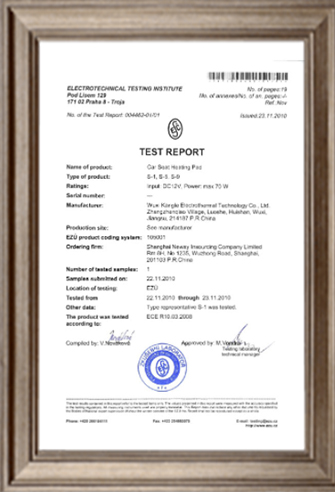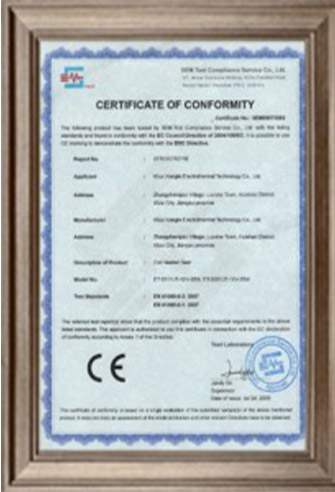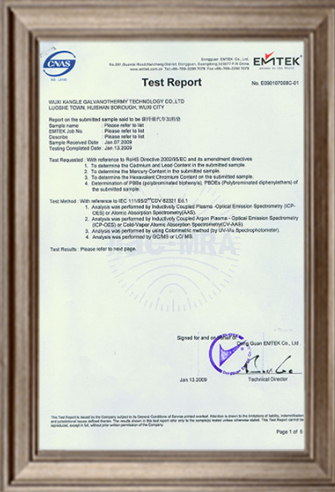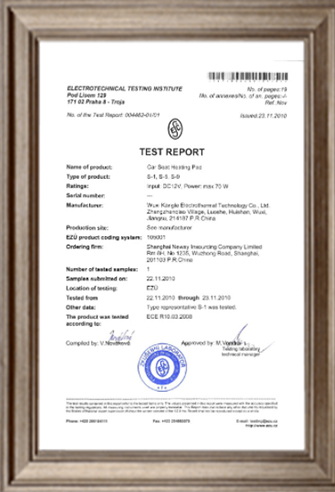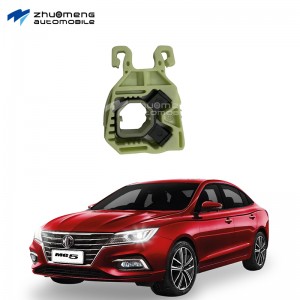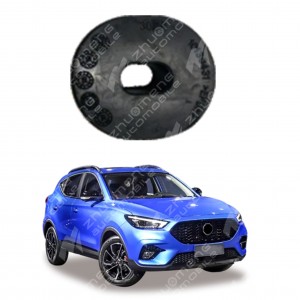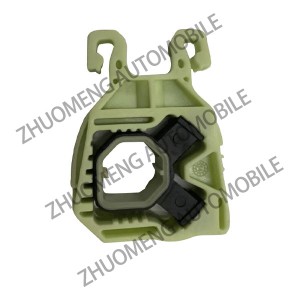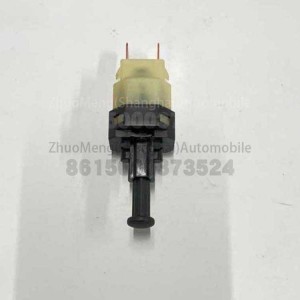Brake pedal.
As the name suggests, the brake pedal is the pedal that limits the power, that is, the pedal of the foot brake (service brake), and the brake pedal is used to slow down and stop. It is one of the five major controls for driving a car. The frequency of use is very high. How the driver controls directly affects the driving safety of the car.
The brake pedal is the common saying of stepping on the brake, and there is a small pedal on the brake rod, so it is also called the "brake pedal". There is also a small pedal above the clutch, called the clutch pedal. The clutch is on the left and the brake is on the right (side by side with the accelerator, right is the accelerator).
Working principle
A wheel or disc is fixed on the high-speed shaft of the machine, and a brake shoe, belt or disc is installed on the frame to produce a braking torque under the action of external force.
Automobile brake pedal operation is divided into: slow braking (that is, predictive braking), emergency braking, combined braking and intermittent braking. Under normal circumstances, slow braking and emergency braking in the wheel lock and stop before the clutch pedal to the end, in order to keep the engine running and conducive to re-change the speed.
Operating essentials
1. Slow braking. Step down the clutch pedal, release the accelerator pedal at the same time, push the gear shift lever to the low-speed gear position, then lift the clutch pedal, and quickly put the right foot on the brake pedal, according to the required speed and parking distance, gradually and vigorously step down the brake pedal until the stop.
2. Emergency braking. Emergency braking can be divided into emergency braking at low speed and emergency braking at high speed. Emergency braking when driving at medium and low speed: hold the steering disc with both hands, quickly step down the clutch pedal, almost simultaneously step down the brake pedal, and take the method of one foot dead to stop the car quickly. Emergency braking at high speed: due to high speed, large inertia and poor stability, in order to increase braking efficiency and improve the stability of the car, the brake pedal should be first stepped down during operation before the wheel is locked. Then step the clutch pedal to use the low engine speed to contain the speed. After the wheel is locked, the front wheel steering is out of control, and the body is easy to slip. The key points of emergency braking need to be mastered are: due to the loss of control of steering after braking, when the inertia of the car travels very close to the obstacle during braking, you can see whether you can stop the car according to the speed, when you can stop the car, try to stop the vehicle, and when you can't stop, you need to go around. When detouring, the brake pedal should be relaxed so that the steering disc plays a controlling role, and the brake pedal should be stepped down after bypassing the obstacle. During emergency braking, the vehicle is prone to sideslip, and the brake pedal should be slightly relaxed to adjust the body.
3. Combined braking. The gear shift lever relaxes the accelerator pedal in the gear, uses the engine speed drag to reduce the speed, and steps the brake pedal to brake the wheel. This method of slowing down by engine drag and wheel brake braking is called combined braking. Joint braking is used more in normal driving to slow down, and the key point should be mastered is: when the speed is lower than the minimum speed standard in the gear, it should be changed into the lower gear in time, otherwise it will accelerate and damage the transmission system.
4. Intermittent braking. Intermittent braking is a braking method in which the brake pedal is intermittently pressed down and relaxed. When driving in mountainous areas, due to long-term downhill, the brake system is prone to high temperature, resulting in reduced braking performance. In order to prevent the brake system temperature from being too high, drivers often use intermittent braking methods. In addition, the air brake device can also use fast intermittent braking because the intake volume is not easy to master.
Vehicles equipped with ABS(electronic anti-lock braking device) are prohibited from using intermittent braking during emergency braking, otherwise ABS will not be able to play its due role.
Operating skill
1, when the car is going downhill, some drivers in order to save fuel, so they hang up neutral, using inertia downhill, for a long time, the brake pressure is not enough, the brake is prone to failure, so it is not recommended to hang up neutral when going downhill. Do not hang neutral, is to let the engine and transmission connected, this time the car downhill is not by inertia, but by the engine to drive, as if the engine with you to go, do not let your car go fast, this is one of the braking.
2, some drivers, when the car brake, use the engine to slow down, but this will not brake on the low gear will be easy to appear the car forward impact phenomenon, the engine will be damaged, so the brake pedal to use correctly.
3, small buses under the long slope need to use low gear, with the engine brake to achieve deceleration, large cars or heavy vehicles long slope remember not to step on the brake, must use the engine to slow down, many large cars are equipped with retarder or brake water spray device to prevent the brake failure caused by overheating in the long slope.
Matters needing attention
(1) During emergency braking, hold the steering disc with both hands, and cannot operate the steering disc with one hand.
(2) The free travel of the brake pedal directly affects the braking time and braking distance. Therefore, be sure to check whether the free travel of the brake pedal is appropriate before going out.
(3) The braking action should be agile, the brake pedal can be released when the vehicle slides sideways, but the action must be fast when turning the steering disc.
(4) When turning at high speed, emergency braking should not be carried out, braking should be appropriate in advance before turning, as far as possible to maintain straight braking, and control the turning speed.
(5) When braking below medium and low speed or when you need to shift, the clutch pedal should be stepped on first and then the brake pedal. When braking above medium and high speed, the brake pedal should be pressed first and then the clutch pedal.
Power control
Whether the timing and intensity of braking can be reasonably mastered depends on the driver's foot effort in handling various situations and controlling the speed. Under normal circumstances, when stepping on the brake pedal, it can be divided into two steps, do not use the method of one foot dead: first step off the brake pedal, foot strength (that is, pressurization strength) according to the need to determine, the foot strength should be fast and powerful when the speed is fast, and the foot strength should be light and stable when the speed is slow; Then according to various conditions for different pressurization or decompression treatment. When braking at high speed, it is easy to produce sideslip. When the car produces sideslip, the brake pedal should be properly relaxed to prevent the vehicle from running off and the steering wheel from losing control.
ABS vehicle precautions
(1) When the vehicle equipped with ABS is in emergency braking, the operation of the steering disc is slightly different from that when the brake pedal is not stepped on, and the brake pedal will pulse, so operate the steering disc carefully.
(2) When driving on a wet road, although the braking distance of the vehicle equipped with ABS is shorter than that of the vehicle without ABS, the braking distance will also be affected by the road surface and other factors. Therefore, the distance between the vehicle equipped with ABS and the vehicle in front must be the same as that of the vehicle without ABS to ensure safety.
(3) When driving on gravel roads, snow and ice roads, the braking distance of vehicles equipped with ABS may be longer than that of vehicles without ABS. Therefore, the speed should be slowed down when driving on the above road.
(4) After the engine starts or the vehicle starts to run, it will hear a sound similar to the motor from the position of the engine, and if you step on the brake pedal at this time, you will feel vibration, and these sounds and vibrations are because the ABS is conducting self-inspection.
(5) When the speed is below 10km/h, ABS does not work, and the traditional braking system can only be used to brake at this time.
(6) All four wheels should use the same type and size of tires, if different types of tires are mixed, ABS may not work properly.
(7) When the vehicle equipped with ABS is in emergency braking, the brake pedal must be stepped on to the end (as shown in the figure), and it must not be operated by stepping on and putting on, otherwise ABS cannot play its due function.
If you want to know more, keep reading the other articles on this site!
Please call us if you need such products.
Zhuo Meng Shanghai Auto Co., Ltd. is committed to selling MG&MAUXS auto parts welcome to buy.


